Unleash Enchanting Experiences: 12 Classic Children’s Books for Sensory Story Adaptation
Welcome, Dear Sensory Readers, to a delightfulpleasing, enjoyable, or satisfying, suggesting happiness, joy, or pleasure journey into the enchanting world of sensory storytelling! If you’ve ever wondered how to create more immersive experiences that captivate and engage our children, you’re in for a treat with this sensory story performance primer.
In this document, we will explore the value of immersive sensory storytelling, setting up interactive environments, and adapting 12 beloved classic children’s books for sensory story performances. From the enchanting underwater world of The Rainbow Fish to the strange adjective / streynj / stranger / strangely / stranger / strangest unfamiliar as a result of being out of one's natural environment or not yet part of one's experience Isn't it strangeHow people can changeFrom strangers to friendsFriends in voyage to Where the Wild
adjective / streynj / stranger / strangely / stranger / strangest unfamiliar as a result of being out of one's natural environment or not yet part of one's experience Isn't it strangeHow people can changeFrom strangers to friendsFriends in voyage to Where the Wild untamed or uncontrolled; living in a natural state and not domesticated Things Are to the mystical realm of Harry Potter and the Sorcerer’s Stone, we’ll show you how to bring these treasured stories to life with sensory elements. We will also delve into the psychology behind it all with our Chrysanthemum Stories. Get ready to be inspired and unleash these stories with us!
untamed or uncontrolled; living in a natural state and not domesticated Things Are to the mystical realm of Harry Potter and the Sorcerer’s Stone, we’ll show you how to bring these treasured stories to life with sensory elements. We will also delve into the psychology behind it all with our Chrysanthemum Stories. Get ready to be inspired and unleash these stories with us!
Unleash the Story: An Invitation to the Senses
Step into a world where stories burst free from the confines of paper and ink, where imagination knows no bounds, and the senses come alive. These captivating sensory stories take storytelling to a whole new level, inviting us to venture beyond the pages and into a three-dimensional realm of sensory exploration. They transport us to enchanting landscapes, engaging our senses in a first-person narrative experience that is truly unforgettable. Designed to be enjoyed in sensory rooms, therapeutic spaces, and educational settings, these stories offer relaxation, focus, learning, and growth for people of all ages and abilities.

Imagine being whisked away to a fantastical land teeming with sights, sounds, and scents that surround and immerse you in the unfolding tale. These stories are crafted with sensory language and vivid imagery, enveloping and guiding us in their narrative world. The storyteller, armed with as little as a story and a feather or as much as staged scripts and cue prompts, fully immerses the audience participants in the story, making it a truly multi-sensory experience. Whether you seek a thrilling adventure or a new way to explore the senses, these stories breathe new life into our sensory spaces.
They are especially valuable for individuals with sensory processing challenges, anxiety, ADHD, and other conditions that may hinder focus and relaxation during storytelling. These stories can be powerful tools for relaxation, emotional regulation, and learning. Teachers, therapists, and parents can integrate them into sensory rooms, libraries, classrooms, and homes, fostering calma state of tranquility, peacefulness, or serenity, free from agitation or disturbance and engaging environments that promote both well-being and knowledge.
During a sensory storytelling performance, the story unfolds with interactive elements woven throughout the narrative. For example, the story may describe various textures or scents, with corresponding tactile objects or aroma diffusers available in the space to heighten the sensory experience. The story may also involve physical movement, encouraging participants to act out scenes or engage in activities that align with the plot. Music and sounds further immerse participants, creating a multi-sensory symphony that offers an alternative way to interpret and engage with the story.
Whether you long to read a captivating tale to your child before bedtime, incorporate sensory experiences into therapy sessions, or create a magical sensory environment in your home or classroom, these kinds of stories have something for everyone to enjoy. At the heart of my mission lies the belief that everyone deserves the joy and wonder of exploring stories with all their capacities. Whether you’re a parent, educator, therapist, or simply a reader seeking an escape into a world of sensory investigation, we invite you to embark on this creative journey with us. Discover the pure not mixed with any other substance : FOUND IN : Land of the Moon - GLOSSARY CARDS joy of immersive sensory stories and performances, and unlock the limitless possibilities that await when we unleash the power of storytelling through the senses.
not mixed with any other substance : FOUND IN : Land of the Moon - GLOSSARY CARDS joy of immersive sensory stories and performances, and unlock the limitless possibilities that await when we unleash the power of storytelling through the senses.
Planning Sensory Storytelling Sets: Unlocking Imagination

Creating an immersive and engaging sensory storytelling experience starts with thoughtful planning of scene sets. By considering the psychology of environmental space design, we can shape the way people feel and interact with a space. Let’s explore the steps to creating story scene sets for sensory storytelling and even touch on some basic set design techniques to keep in mind for informal performances.
- Define the Story: Begin by selecting a captivating story that aligns with your audience’s interests and developmental needs. Consider the themes, characters, and key scenes that can be brought to life through sensory elements.
- Identify Key Scenes: Read through the story and identify pivotal moments or scenes that lend themselves well to sensory exploration. These scenes should have distinct sensory elements such as sounds, textures, scents, and visuals that can be recreated in the sensory room.
- Storyboard the Scenes: Sketch out a storyboard or make a list of the identified scenes in sequential order. This will help you visualize how the story will unfold and guide your design choices for each scene.
- Determine Sensory Elements and Props: For each scene, brainstorm the sensory elements that can be incorporated to enhance the storytelling experience. Consider how you can engage multiple senses, such as using textured materials, ambient sounds, fragrances, and visual cues. Select props that will effectively represent objects or characters from the story. Choose items that are safe, durable, and relevant to the sensory elements you want to highlight. Incorporate a variety of textures, shapes, and sizes to provide tactile exploration opportunities. As you embark on your sensory storytelling adventures, it’s helpful to have a collection of basic sensory storytelling props at your fingertips. These are some simple props that can transform any space into a sensory wonderland:
- ☐ Soft fabrics and textiles to represent different textures and touch sensations
- ☐ Scented objects such as essential oils, flowers, or herbs to evoke different aromas
- ☐ Ambient soundscapes or musical instruments to create a sonic landscape for your stories
- ☐ Colorful lights, projectors, or glow sticks to enhance the visual experience that reflects the story’s setting – if the story takes place at night, dim the lights and use twinklingshining with a flickering, sparkling light, indicating happiness, joy, or magic fairy lights to evoke a sense of wonder and magic
- ☐ Tactile toys and objects with varying shapes, sizes, and materials for tactile exploration
- ☐ Sensory bottles filled with water, glitter, or textured materials for visual and auditory stimulation
- ☐ Sensory bins filled with materials that correspond to the story elements – if the story features water, include a bin filled with blue-tinted water and small toy boats
- ☐ Natural materials like leaves, pinecones, or seashells to bring elements of nature into your storytelling and create an experience grounded in nature Use simple props and costumes to create a sense of immersion and first-person engagement. For instance, if the story features animals, have participants wear animal ears or tails to help them feel like they are part of the story. These sensory tools are just the beginning – let your imagination soar as you curate a collection that aligns with your unique stories and storytelling style.
- Plan the Set Design: Based on the identified sensory elements, plan the set design for each scene. Consider the layout, furniture placement, props, and materials that will create the desired atmosphere and facilitate sensory engagement. Use colors, lighting, and decor to evoke the mood and tone of the story.
- ☐ Create a sensory path that corresponds with the story’s setting and arrange the scenes in a logical order that follows the narrative progression of the story – if the story takes place in a forest, include elements like pine cones, leaves, and branches that participants can touch and feel as they walk along the path
- ☐ Consider flow and safety – ensure that the layout of your sensory room allows for a smootha texture that is even, without any roughness or bumps, conveying a sense of calmness, sleekness, or elegance flow between scenes and also consider the accessibility and safety of the space, keeping in mind any specific needs of the individuals who will be experiencing the sensory storytelling
- ☐ Use a simple backdrop that corresponds with the story’s setting. For example, if the story takes place in a forest, use a green backdrop with tree cutouts to create a forest-like atmosphere
- ☐ Use minimal lighting to create a cozya feeling of warmth and comfort, suggesting softness, relaxation, or homeliness and intimate setting being careful to watch for emotional reactions and making adjustments as needed
- ☐ Encourage participants to sit in a circle or semi-circle where appropriate to create a sense of community and engagement
- Encourage Interaction by providing opportunities for hands-on exploration, movement, and social interaction – interactive elements such as buttons, switches, or movable parts allow participants to trigger sensory effects or changes in their environment
- Embrace Flexibility & Feedback by remembering that sensory storytelling is a dynamic and adaptable experience where we can allow for flexibility within story scene sets for participants to explore and interact at their own pace – provide options for customization or personalization, so individuals can make choices that suit their preferences and needs

By planning our sensory scene sets with care, we can create an enchanting environment that transports audience participants into the world of the story. Remember to consider the psychological impact of design elements, creating spaces that are inviting, comfortable, and conducive to sensory exploration. With a well-designed and thoughtfully executed sensory storytelling experience, we can unlock magical moments of connection, imagination, and learning.
Overcoming Obstacles: Navigating Social Misunderstandings
In our quest to create immersive sensory experiences, it’s essential to address common social problems and misunderstandings that can arise. One challenge is ensuring that our sensory stories are inclusive and respect individual boundaries. We must be attentive to different sensory sensitivities and preferences.
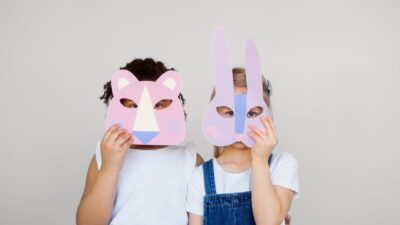
It’s crucial to provide options and choices, allowing participants in the audience to freely engage at their own comfort level. By fostering a safe and inclusive environment, we can ensure that everyone feels respected and valued and at their most ready to enjoy the story experience.
It’s also important to consider the potential for overwhelming sensory stimuli throughout the telling of our stories. While we aim to create immersive experiences, we must strike a balance that stives to avoid sensory overload. Offering quiet spaces for refuge or adjustable sensory elements can help individuals regulate their sensory input and maintain a sense of calm. Stay attentive to audience response and make feedback notes when possible or after the experience so as to improve and make adjustments for next time.
12 Treasured Story Books to Adapt & Explore
These classic children’s books offer captivating sensory journeys that can engage multiple senses, making them perfect for creating immersive experiences in sensory spaces. Each story presents unique opportunities for children to explore textures, engage in imaginative play, and embrace the magic of storytelling. Look out for Chrysanthemum Stories’ adapted versions of these treasured stories coming out this summer as freebies!
‘Where the Wild Things Are’ by Maurice Sendak
Step into the enchanting world of Where the Wild Things Are where imagination runs wild. Bring the sensory room to life with the rustling of leaves, the earthy scent of the forest, and the soft touch of moss-covered props. Let the children stompto tread heavily and noisily, often indicating anger or frustration and roar like the wild things, immersing themselves in a sensory adventure they’ll never forget.
‘The Rainbow Fish’ by Marcus Pfister
Dive deep into the shimmering underwater realm of The Rainbow Fish and discover the magic that lies beneath the waves. Create a sensory wonderland with sparkling fabrics that mimic the glimmering sea, gently tinkling chimes to evoke a sense of tranquility, and a kaleidoscope of colorful sensory bottles to captivate little ones. Let their imaginations swim freely as they explore the textures and colors of the ocean.
‘Harry Potter and the Sorcerer’s Stone’ by J.K. Rowling
Join Harry Potter on his extraordinary journey through the wizarding world of Hogwarts. Set the stage for a sensory experience by transforming the room into a mystical realm with the sounds of crackling wands and flutteringa light, rapid movement, resembling wings or leaves in the wind owl wings, soft and velvety materials reminiscent of Hogwarts robes, and a touch of enchantment in the air. Let the young wizards and witches immerse themselves in a world of magic as they embark on their own Hogwarts adventure.
‘The Gruffalo’ by Julia Donaldson and Axel Scheffler
Venture into the deep dark woods and encounter the lovable Gruffalo in this captivating sensory tale. Set the scene with a sensory path featuring textures like prickly pinecones, smooth pebbles, and rustling leaves underfoot. Allow children to use their senses to explore the textures and sounds of the woods, immersing themselves in the whimsical world of the Gruffalo.
‘Goodnight, Goodnight, Construction Site’ by Sherri Duskey Rinker and Tom Lichtenheld
Ease little ones into a peaceful slumberto sleep peacefully and deeply, often indicating rest or rejuvenation with the sensory story of hardworking construction vehicles winding down for the night. Transform the sensory room into a construction site oasis with the soft rumble of relaxing construction sounds, sensory bins filled with sand or gravel for tactile exploration, and cozy blankets to create a sense of comfort. Let children engage their senses as they mimic the construction vehicles and wind down for a goodnight’s sleep.
‘Goodnight Moon’ by Margaret Wise Brown and Clement Hurd
Enter a world of soothing tranquility with Goodnight Moon, a timeless bedtime favorite. Create a cozy sensory corner with plush blankets, twinkling fairy lights, and a gentle lullaby playing in the background. Encourage children to snuggle up and explore the soft textures, fostering a sense of calm and relaxation as they bid goodnight to the objects in the room.
‘The Cat in the Hat’ by Dr. Seuss
Embark on a whimsical adventure with The Cat in the Hat, where anything can happen. Bring the story to life with a sensory station filled with vibrant and wacky objects, textured materials to touch and explore, and playful props that encourage imaginative play. Let children unleash their creativity as they join the Cat in the Hat on his mischievous escapades.
‘Brown Bear, Brown Bear, What Do You See?’ by Bill Martin, Jr
Take a sensory journey through the animal kingdom with Brown Bear, Brown Bear, What Do You See? Set up a sensory table featuring different textured fabrics, toy animals, and animal sounds. Encourage children to feel the soft fur, listen to the animal sounds, and engage in a delightful guessing game. Let their senses come alive as they explore the colorful world of animals.
‘Alice’s Adventures in Wonderland’ by Lewis Carroll
Tumble down the rabbit hole and enter the enchanting realm of Alice’s Adventures in Wonderland. Create a sensory wonderland with a variety of textures, scents, and sounds, such as fluffy pillows, scented flowers, and whimsical music. Encourage children to use their senses to navigate Wonderland, immersing themselves in the peculiar and magical world of Alice.
‘We’re Going on a Bear Hunt’ by Michael Rosen and Helen Oxenbury
Join the intrepid adventurers on their bear hunt through various terrains in this thrilling sensory story. Set up sensory stations along the hunt, featuring materials like crunchy leaves, squishy mud, and icy water. Encourage children to feel the textures, stomp their feet, and make the corresponding sounds, immersing themselves in the excitement of the hunt.
‘The Very Hungry Caterpillar’ by Eric Carle
Embark on a sensory exploration of transformation with The Very Hungry Caterpillar. Create a tactile feast with textured fabrics, toy fruits, and a butterfly garden sensory bin. Allow children to touch and feel the different textures, engage in imaginative play, and reenact the caterpillar’s journey from hunger to metamorphosis. Let their senses come alive as they experience the wonder of nature’s transformation.
‘The Giving Tree’ by Shel Silverstein
Delve into the heartfelt tale of The Giving Tree, a story that beautifully explores the themes of selflessness and unconditional love a strong feeling of affection and attachment towards someone or something. Set the stage for sensory engagement with a cozy reading nook adorned with tree-themed decorations and natural materials. Incorporate elements such as bark-textured sensory panels, the scent of fresh-cut wood, and soft green blankets or cushions to represent the tree’s generous spirit. Encourage children to touch the different textures, smell the comforting scent of nature, and reflect on the profound messages conveyed by this timeless story.
a strong feeling of affection and attachment towards someone or something. Set the stage for sensory engagement with a cozy reading nook adorned with tree-themed decorations and natural materials. Incorporate elements such as bark-textured sensory panels, the scent of fresh-cut wood, and soft green blankets or cushions to represent the tree’s generous spirit. Encourage children to touch the different textures, smell the comforting scent of nature, and reflect on the profound messages conveyed by this timeless story.
The Magic of Immersive Storytelling
Congratulations, Dear Sensory Readers, on completing this sensory storytelling exploration primer with us! We hope you’re feeling inspired and ready to create your own magical sensory experiences. By weaving together storytelling, environmental design, and psychology, you have the power to transform spaces and touch hearts.
As we delve into the immersive elements of Chrysanthemum Stories, prepare to be tantalized by the vivid descriptions and imaginative language. Feel the soft moss under your fingertips, hear the whispers of leaves rustling in the breeze a light wind : FOUND IN : Land of the Moon - GLOSSARY CARDS, catch a whiff of fragrant wildflowers, and lose yourself in the vibrant hues of the forest’s tapestry. These original stories and adaptations are a sensory feast, inviting our audience to embrace the world with open arms and engage new and classic stories in delightful ways.
a light wind : FOUND IN : Land of the Moon - GLOSSARY CARDS, catch a whiff of fragrant wildflowers, and lose yourself in the vibrant hues of the forest’s tapestry. These original stories and adaptations are a sensory feast, inviting our audience to embrace the world with open arms and engage new and classic stories in delightful ways.

Remember, sensory storytelling is an art that embraces inclusivity, mindfulness, and the beauty of the senses. As you plan your own sensory story adventures, be open to the unexpected and cherish the connections you foster along the way. By subscribing to the Chrysanthemum Stories Newsletter, you’ll gain access to even more stories like this one, delivered straight to your inbox, keeping your imagination and creativity ablaze.
Now, let’s create sensory wonders that ignite joy, foster growth, and touch the hearts of all who experience them. The world is waiting to be enchanted by your storytelling prowess, so let your imagination roam to move around without a fixed destination : FOUND IN : Land of the Moon - GLOSSARY CARDS free!
to move around without a fixed destination : FOUND IN : Land of the Moon - GLOSSARY CARDS free!
Wishing you delightful adventures and sensory-filled tales,
Mrs. Autumn Designer, Storyteller, and Sensory Experience Enthusiast Psst ☞ Some of the links included in this post are affiliate links & I may earn a commission on sales made through them.

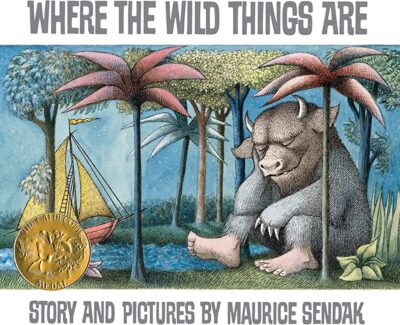
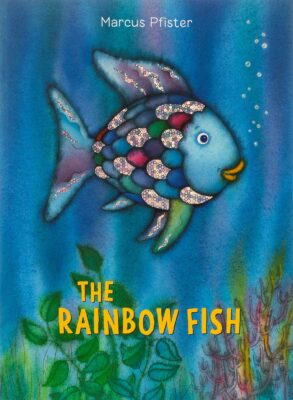

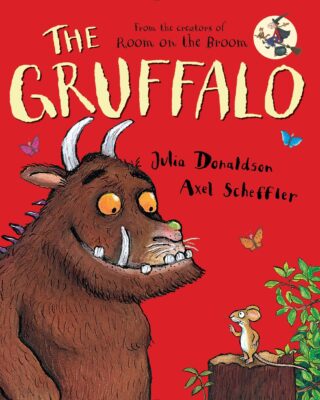

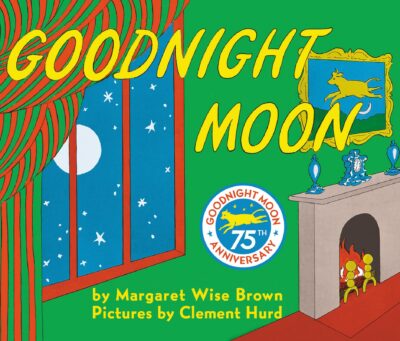

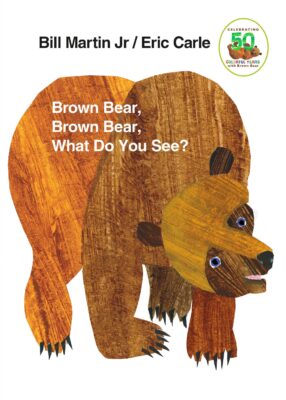
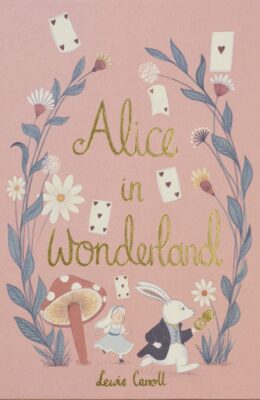
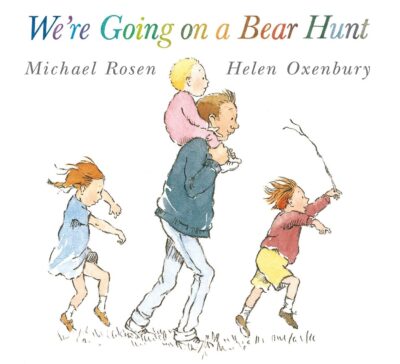
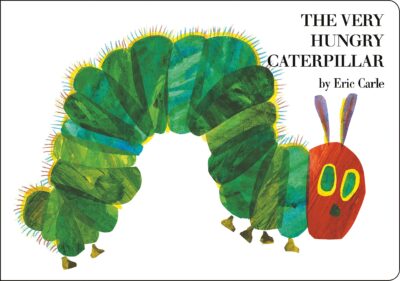
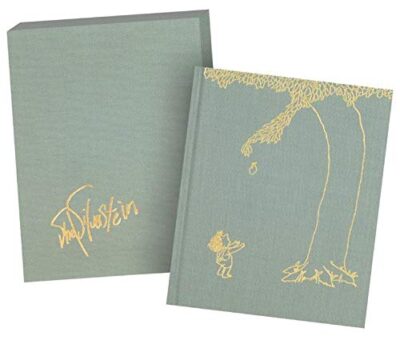
Quite unique to say the least!
P.S. Your Like button doesn’t seem to be loading.
Thank you!